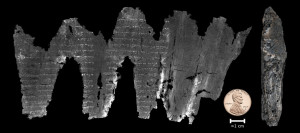26 September 2016 (Paris, France) – As the year draws to close – kind of – I am off to my last major conference of the year: the DLD Tel Aviv Innovation Festival. I have a small digital humanities workshop later this year on which I will report.
For the past three years I have tried to keep to a reduced conference circuit … but I have failed (my conference schedule here). I added DLD Tel Aviv a few years ago, more as an opportunity to meet Yossi Matias, the managing director of Google’s R&D Center in Israel and Senior Director of Google’s Search organization, and his team. Yossi is clearly one of the smartest guys around. If I learned nothing else from this conference it has been that every iPhone addict and Google-whacker is continually evolving their thinking by making the most of today’s digital tools, and out thinking will continue to evolve as new tools enter our lives. That is the new, marvelous cognitive landscape.
But what I am very keen to see … which will require a side-trip from DLD … is the new technology researchers have developed which can “virtually” unroll charred ancient parchment using imaging technology called X-ray microtomography.
There have been numerous articles in the press about this but a short summary:
For nearly 50 years, a charred ancient parchment, discovered at the archaeological site En-Gedi in Israel, has remained unreadable. The damaged scroll, written on animal skin, was too fragile to unravel; efforts to read it led to pages disintegrating on contact. Now researchers have virtually unrolled the scroll using the imaging technology I noted above.
What the researchers found is that the En-Gedi document is the oldest known copy of the Hebrew Bible in the Masoretic text—the authoritative text used in Rabbinic Judaism and Protestant bibles. The famous Dead Sea Scrolls, while older than the En-Gedi bible, have many differences from the Masoretic text.
Ephrat Livni, who is actually an American artist, writer and lawyer who works internationally on large scale street art projects and writes for the Jerusalem Report in Israel, recently noted:
The exact age of the En-Gedi bible is still up for debate. Paleographical research indicates that it was likely written in the first or second century CE, while radiocarbon results date the scroll to the third or fourth century CE. Either way the En-Gedi scroll offers a glimpse into the earliest stages of almost 800 years of near silence in the history of the biblical text.
Perhaps even more important than this specific discovery is that the findings prove a method that could be invaluable for the field of archeology: the En-Gedi bible is the first severely damaged, ink-based scroll to be unrolled and identified noninvasively.
Livni points to what I think is the most definitive piece, so far, about the use of this technology, a long piece in Science Advances magazine (click here).
The process is complex, starting with imaging the scroll in its entirety and creating a three-dimensional volumetric scan, then segmenting, flattening, and texturing those images. The result is a set of two-dimensional images that reveal the writing on the original scroll. What the team of computational scientists and archaeologists did was to first X-ray the untouchable document to create digital slices of the scroll that could then be separated like pages, and viewed on computer. The Science Advances piece above describes the process but here is a nifty Youtube video that walks you through it:
Obviously this work offers hope for the restoration of damaged historical texts currently preserved in archives all over the world that have yet to be studied.
